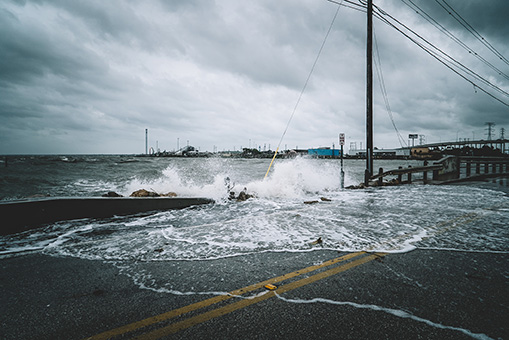How utilities can mitigate disruptions and build resilience during hurricanes.

By Matt Smith, Senior Director of Grid Management, Itron
The Atlantic hurricane season is shaping up to be even more active than previously anticipated, according to a new forecast from Colorado State University. This escalation raises significant concerns for utility companies, which bear the responsibility of maintaining critical electricity and water services during these extreme weather events.
In light of these heightened risks, preparedness for utility companies is more crucial than ever. This article shares key steps that utilities can implement to prepare for hurricane season, minimize disruptions and ensure consistent delivery of essential resources.
Utilities should begin with a detailed risk assessment, which evaluates their entire infrastructure to pinpoint weaknesses in critical components such as power lines, substations and other vital assets.
This assessment should factor in elements like the potential for wind-related damage, risks associated with flooding and storm surges, the age and state of existing infrastructure and data on impacts from past hurricane events. By understanding the specific risks their infrastructure faces, utilities can strategically focus their preparation efforts and allocate resources to where they are most needed.
To ensure the reliability and resilience of critical infrastructure during hurricanes and throughout the year, utility companies must adopt a robust maintenance strategy. This should involve conducting frequent assessments of vital equipment, strengthening structures that are susceptible to damage, managing vegetation growth (especially by pruning trees in close proximity to power lines) and replacing aging components with advanced, weather-proof materials.
In areas prone to high winds, replacing wooden utility poles with composite or steel alternatives can significantly reduce the occurrence of outages. Similarly, installing flood barriers around substations in low-elevation areas can prevent widespread service disruptions. By implementing these types of proactive measures, utilities can enhance their systems’ ability to withstand the impact of hurricanes while simultaneously improving overall reliability.
To ensure a swift response and efficient recovery process, utilities must prioritize effective resource management. This involves maintaining a current inventory of critical components, such as transformers, poles and cables, while also ensuring that backup generators and emergency equipment are readily available and in proper working condition. By proactively developing a strategic plan to pre-position resources in areas likely to be impacted, utilities can significantly reduce response times and expedite restoration efforts in the wake of a hurricane.
Having a well-prepared workforce is critical for responding effectively to hurricanes. Utilities should regularly hold training sessions to ensure staff are familiar with the most current technologies and procedures. Conducting realistic simulation drills that put response plans to the test can help identify potential weaknesses and areas that need improvement. These simulations also ensure that teams are prepared to handle actual crisis situations.
Advanced grid technologies, such as advanced metering infrastructure (AMI) and distributed intelligence, are instrumental in minimizing the impact of hurricanes. AMI systems enable utilities to have real-time, bidirectional communication between smart meters and their operations hub. With AMI, utilities can accurately locate outages, which eliminates the need for time-consuming manual inspections and results in faster, more efficient power restoration. AMI systems also offer remote disconnection and reconnection capabilities, which are invaluable when dealing with flooded areas or damaged properties, enhancing crew safety and expediting the restoration process.
Distributed intelligence (DI) takes grid management a step further by allowing devices at the grid’s edge to process data and make decisions autonomously. This enables real-time assessment and automatic response to disruptions. For example, when Hurricane Harvey struck Houston in August 2017, over 250,000 Texans experienced power outages. Thanks to smart grid and DI technology, CenterPoint Energy swiftly restored power, preventing approximately 45 million outage minutes for its customers. Similarly, when Hurricane Irma hit Florida just weeks later, Florida Power & Light managed to restore service to 1 million customers before the storm had passed and to 2 million customers after one day.
DI elevates grid management by empowering devices at the grid edge with data processing and local decision-making capabilities. This enables real-time assessment and autonomous responses to disruptions. One example is smart distribution automation endpoints, such as teaming reclosers, which can detect outages and reroute power automatically when damage occurs, restoring service to households before repair crews arrive.
The integration of AMI and (DI) results in a resilient, adaptable and responsive grid that is well-equipped to tackle the challenges presented by hurricanes.
With the possibility of more frequent and severe hurricanes in our future, it is imperative for utilities to embrace a proactive strategy for strengthening grid resilience. By implementing these measures, utilities can enhance their preparedness for extreme weather events, minimize the adverse effects of storms and maintain dependable electricity and water services for their customers.
Scott Ellyson, CEO of East West Manufacturing, brings decades of global manufacturing and supply chain leadership to the conversation. In this episode, he shares practical insights on scaling operations, navigating complexity, and building resilient manufacturing networks in an increasingly connected world.